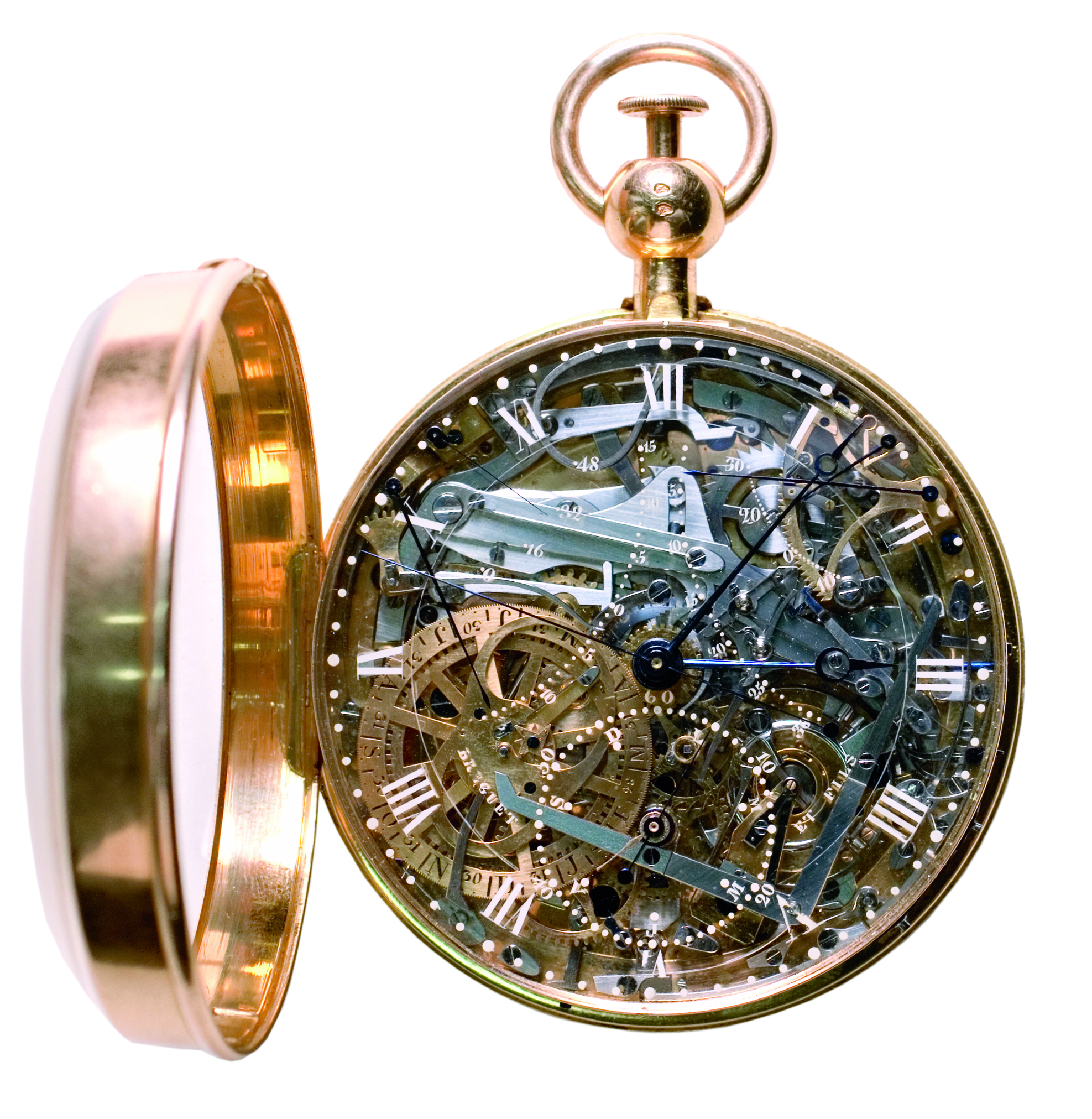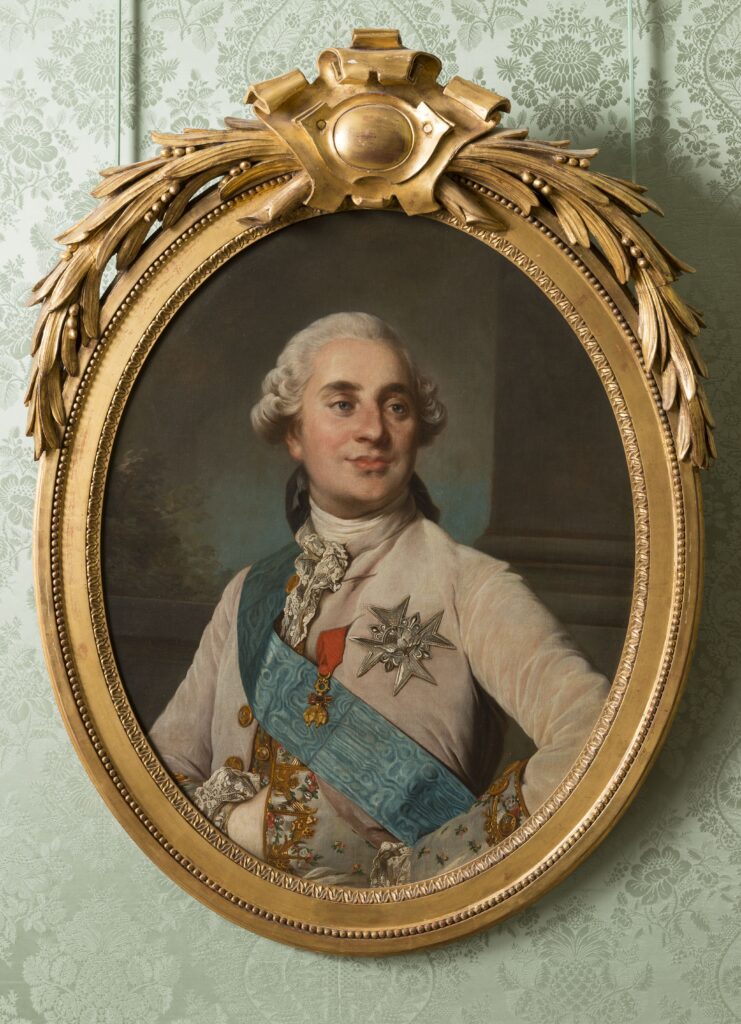If you were a member of the French Royal Court in 1783, you would have witnessed the remarkable innovation that was hot air ballooning, with the first French flight taking place over the Palace of Versailles. While spectators marvelled at the unprecedented spectacle of the giant balloon above their heads, little did they realise that another remarkable achievement was quietly put into motion.
An order for the most complicated and expensive watch of its time was being placed with the most renowned watchmaker of the era, Abraham-Louis Breguet, for the most famous of French queens, Marie Antoinette.

Stunning clocks and watches have been made for kings, queens and rulers since the invention of the portable mechanical timepiece in the sixteenth century. But what makes this arguably the most famous watch in the world is its incredible story, spanning four centuries, three countries, a revolution, theft and a remarkable recovery. This watch outlived its creator, the nation of France as it was known, and continues to captivate people to this day.
The identity of who placed the order with Abraham-Louis Breguet remains mysterious, but, given the exceptional and expensive nature of the request, it is highly likely that it was an admirer of the queen. Some think it was Count Hans Axel von Fersen, a Swedish aristocrat who was a close friend to the queen and fearlessly defended the royal family during the Revolution. While there is no evidence that von Fersen and Marie Antoinette were more than friends, it has been suggested that he was referring to the queen when he wrote this to his sister: ‘I have decided never to marry. It would be unnatural… I cannot belong to the one person I truly want… So I prefer to belong to nobody.’
Thanks to the preservation of the Breguet archives, we can almost hear the mystery client making their request to Breguet. ‘Everywhere, gold must completely replace brass…’, they are recorded to have said, and ‘all of the complications possible and known to be incorporated’. Complications are a technical (horological) term for functions other than telling the time and this watch contained many.
Presumably responding to a question about what the budget was, the client said that there was to be: ‘no limit on time of manufacture or on price.’ Breguet clearly took this to heart – watchmakers of his calibre were known for their quality of work, but not their quickness – and it would take several decades for the watch to be completed.
King Louis XVI and Marie Antoinette were both admirers of Breguet’s timepieces. The queen herself owned many of his creations and recommended him to the wider royal court and their guests. She even requested ‘a simple Breguet watch’ while imprisoned in 1792, the year before she was executed. Unbeknown to the queen, the beautiful and complicated watch intended for her was nine years into production by this point. It is tragic to think that such a splendid gift never reached its recipient, but what we know about the watch is further evidence that the queen had a very personal interest in science and technology.

An admirer could have purchased any kind of lavish gift for the queen, but they chose a watch with many complications. This is significant as it has been assumed that large, complicated watches were primarily the possessions of men. So-called ‘ladies’ watches’ from the era are smaller and less complicated, which seems to reflect attitudes to women’s education at the time more than practical considerations of size and weight.
In 1789 the French Revolution began and the events which followed saw the execution of King Louis XVI on 21 January 1793 and Marie Antoinette on 16 October 1793. Von Fersen was much affected by the loss of the queen, declaring: ‘I have lost everything I had in this world…. The one I loved so much, for whom I would have given my life a thousand times over, is no more.’
Von Fersen died in Sweden in 1810, murdered by a mob during a period of popular unrest. If he was the original client, this may be why the watch was never delivered. It is assumed work on the watch paused during the Revolution and its immediate aftermath as Breguet was forced to flee to Switzerland during this time. He returned to France in 1792 and work on the watch continued over the next two decades.
The Breguet archives reveal the watch was finished in 1827, just three years before the death of Abraham-Louis Breguet and the signature ‘Breguet et fils’ tells us his son was involved in the finishing. Creating such a masterpiece involved more than just the two makers themselves. Many people were employed in their workshop and the makers would have traded with a huge number of people to procure the parts and materials they needed.
The finished watch is a tour de force of horological accomplishment. It is a perpétuelle, meaning it is self-winding, and it contains a ‘parachute’ shock-absorbing mechanism – both inventions of Abraham-Louis Breguet. On the rock crystal dial there are indices for: the time of day (in hours, minutes and seconds), date of the month (corrected to account for leap years through a perpetual calendar mechanism), day of the week and month of the year, 48-hour power reserve (or state of winding), temperature via a bi-metallic thermometer, and equation of time in minutes plus or minus (this is the discrepancy between the time on the watch and the mean solar time shown by a sundial, which varies throughout the year).
The watch could sound the hours, quarters and minutes. Minutes were sounded through a sequence of striking the last hour and quarter followed by the number of minutes after that last quarter. For example, to sound 10:53, the watch would first sound ten hours, then three quarters and then eight minutes, a much more practical approach than sounding all fifty-three minutes in one go.
After the watch was completed it remained in the Breguet company’s possession. Its first recorded owner was the elderly Marquis de la Groye, who had been Marie-Antoinette’s pageboy in his youth. The watch was in the Breguet workshop for repair when he died in 1838, and so the Breguet family became custodians of the watch once again. The watch then moved between several prominent collectors including Sir Spencer Brunton in 1887, Murray Marks in 1901, and Louis Desoutter in 1904.
The watch was eventually purchased in 1917 by Sir David Lionel Salomons of Tunbridge Wells. Sir David Lionel was a barrister and industrialist who had a lifelong passion for horology and amassed a remarkable collection of clocks and watches. He was particularly interested in Breguet watches, once saying: ‘To carry a fine Breguet watch is to feel you have the brains of a genius in your pocket.’ He was a member of the Worshipful Company of Clockmakers, which now displays its collection at the Science Museum, where the Shrieval badge worn by his uncle, Sir David Salomons, the first Jewish Lord Mayor of London, can be seen on display.
Sir David Lionel died in 1925 and his daughter, Vera Bryce Salomons, donated his collection to what would become the L.A. Mayer Museum for Islamic Art , which she founded in 1974.
The watch was displayed at the museum until one night in 1983 when it was stolen. The thief climbed through a narrow window, cut holes in the display cases and departed with 100 watches, several paintings and a few books. The thief was never caught, and the watches remained missing for 23 years.
In 2004, while the watch was still missing, Nicolas Hayek (then CEO of the Swatch Group, parent company of today’s Breguet) challenged Breguet’s watchmakers to build an exact replica of the Marie Antoinette watch. The replica, which was based on archival material and a few old photos, was completed in 2008. A masterpiece in its own right, it is known as Breguet no. 1160 (a fitting tribute to the original number 160).
In 2006, just two years before the replica was completed, the Museum for Islamic Art was contacted by a lawyer who informed them that her client, who wished to remain anonymous, had discovered the stolen watches in her deceased husband’s belongings and wished them to be returned to the museum. It was later revealed that Na’aman Dieler, a notorious thief was the culprit.
Following the return of the watches, the museum redeveloped its clocks and watches gallery, with the Marie Antoinette watch taking pride of place. Thanks to the generosity of the museum, this most famous of watches will travel to the Science Museum to be marvelled at by visitors to Versailles: Science and Splendour. Fittingly, the watch will feature in a section of the exhibition which explores how an interest in science and technology had become part of life at Versailles under the reigns of Louis XV and XVI. Alongside the watch, visitors will also see portraits of kings and princesses as well as a gilded telescope which may have belonged to Princess Sophie (Louis XV’s daughter) and an intricate combination and cylinder lock owned by Louis XVI, who was fascinated by locksmithing.
Versailles: Science and Splendour will open at the Science Museum from 12 December until 21 April 2025. Tickets can be booked via our website or in person at the museum.

